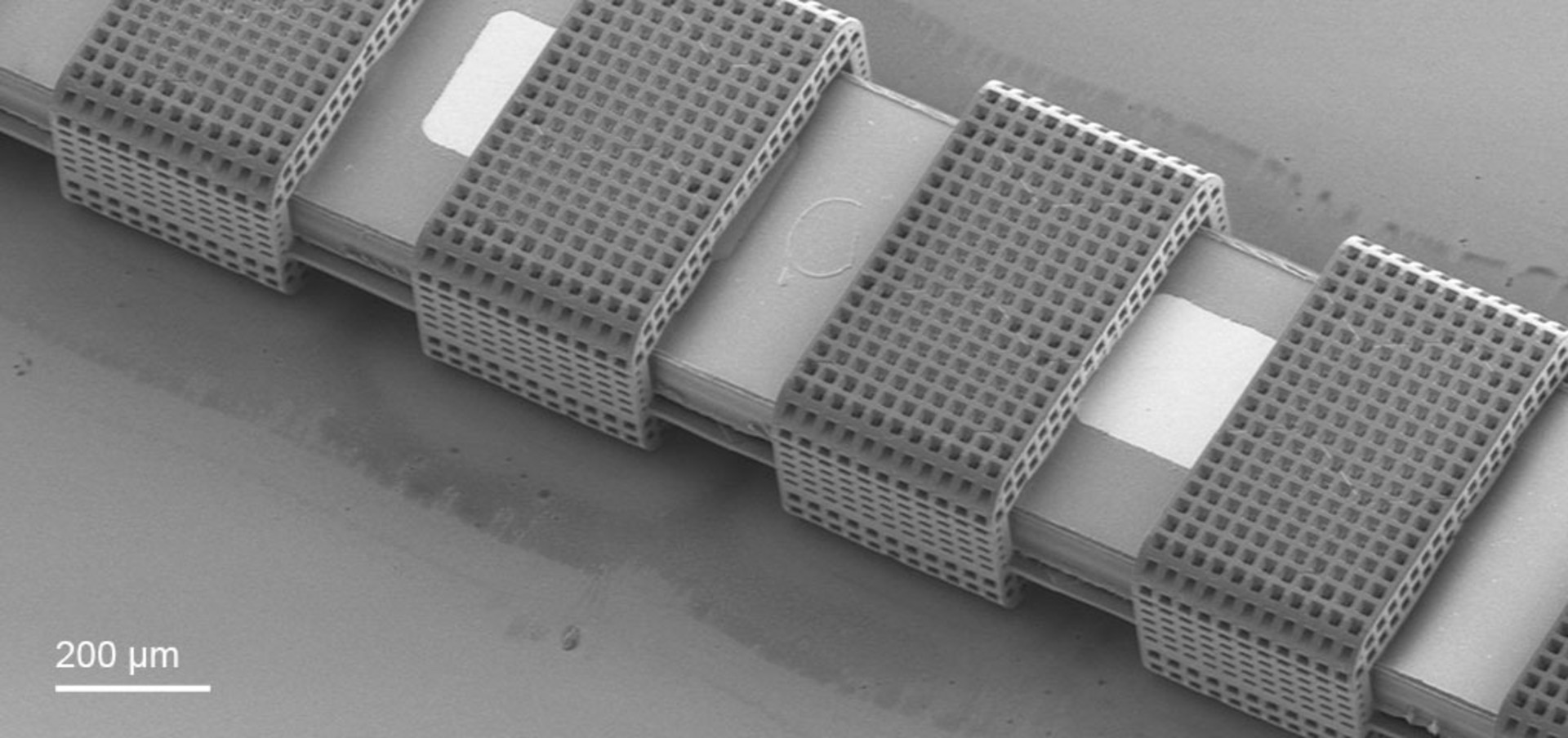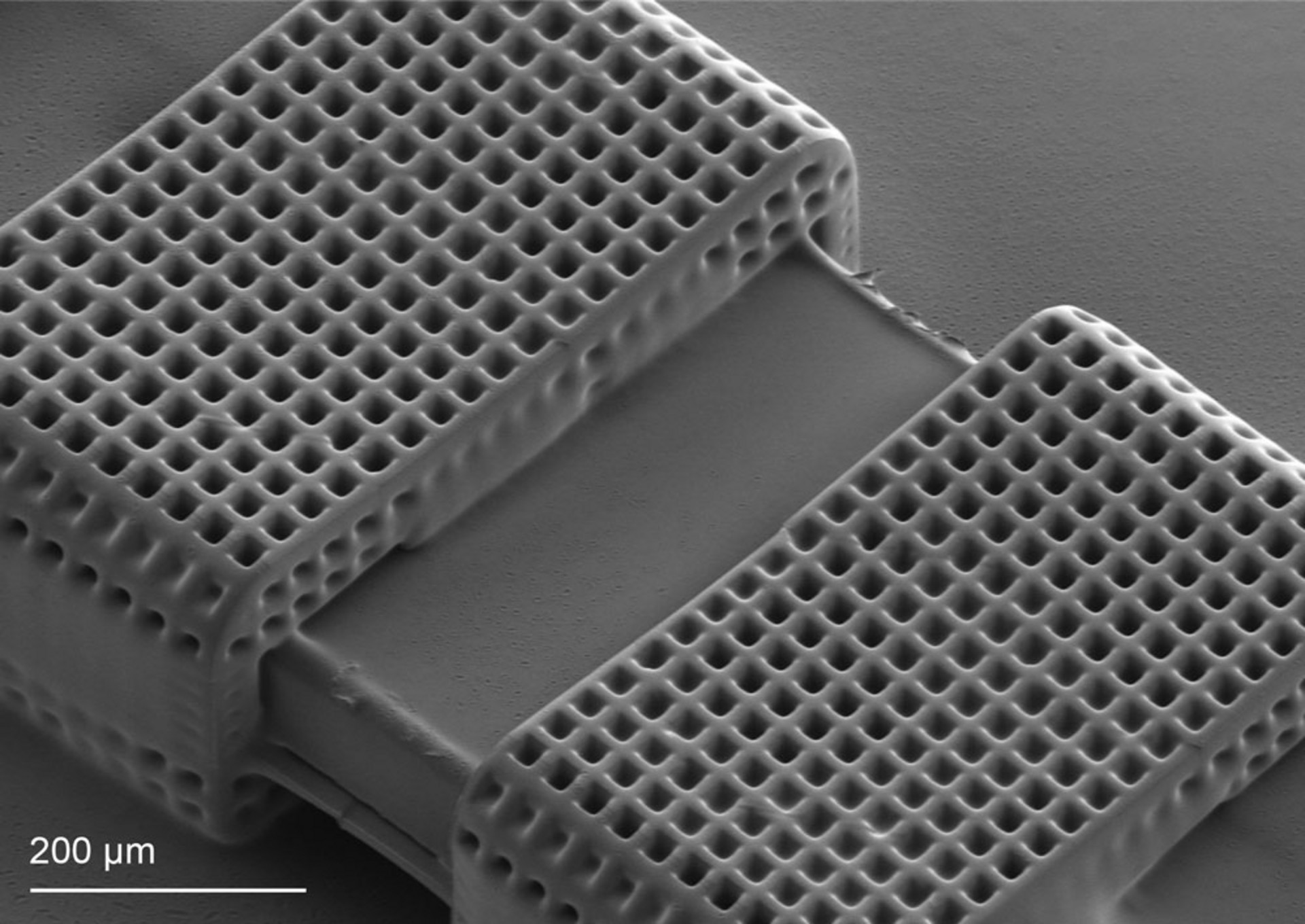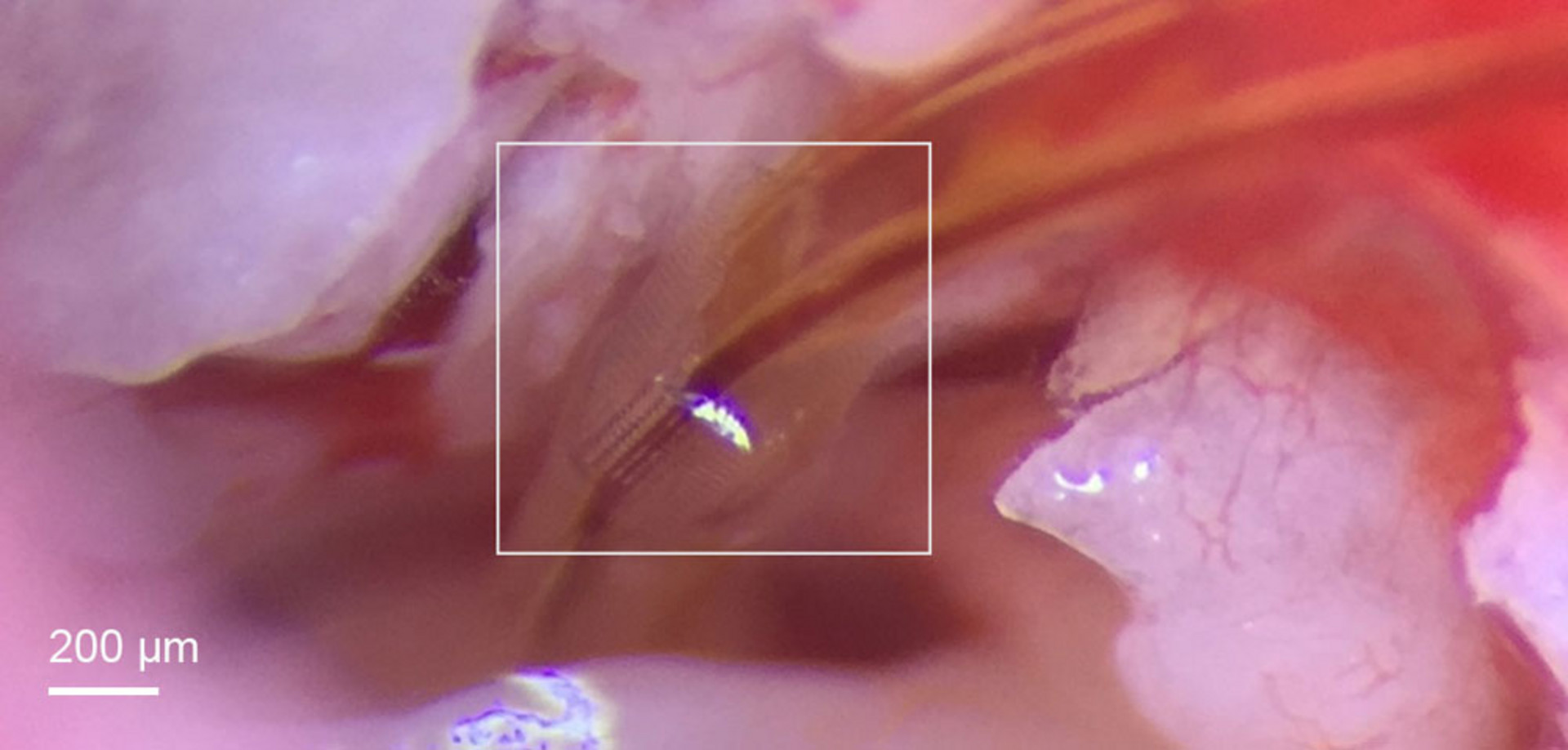According to the World Health Organization (WHO), over 5% of the world’s population – around 466 million people – suffer from hearing loss [1]. Among some patients, severe hearing loss is due to damaged hair cells in the inner ear. In these cases, the auditory nerve can be stimulated directly with cochlear implants. To protect the residual hearing against electrode insertion trauma (EIT), an international team of bioengineers from the Bio-Microrobotics Laboratory of the Daegu Gyeongbuk Institute of Science and Technology (DGIST) in collaboration with the Ajou University and Microsystems Lab of the Swiss Federal Institute of Technology Lausanne (EPFL) developed a novel cochlear implant.
They used Nanoscribe’s Photonic Professional systems to fabricate microstructure scaffolds that were assembled onto a cochlear electrode array. This cochlear implant has been successful in stimulating the auditory nerves. Moreover, it has been demonstrated with guinea pigs that the 3D-printed micro-reservoirs release steroids locally and continuously, thus demonstrably protecting their residual hearing.
High-precision microstructure scaffolds in 3D
The researchers presented an innovative microscaffold cochlear electrode array: They fabricated a 2D flexible electrode array based on microelectromechanical system (MEMS) technology to be used for electrical stimulation of the auditory nerve. The MEMS-based electrode was assembled with several separated microscopic porous 3D structures that carry and release steroids to protect residual hearing.
The high-precision 3D scaffolds were fabricated by means of Two-Photon Polymerization and applying the Solution Set Medium Features to achieve porous structures with micrometer size. This versatile 3D printing approach enabled to tailor the microscaffolds with the required dimensions and geometry to coat a large surface area with steroids.




